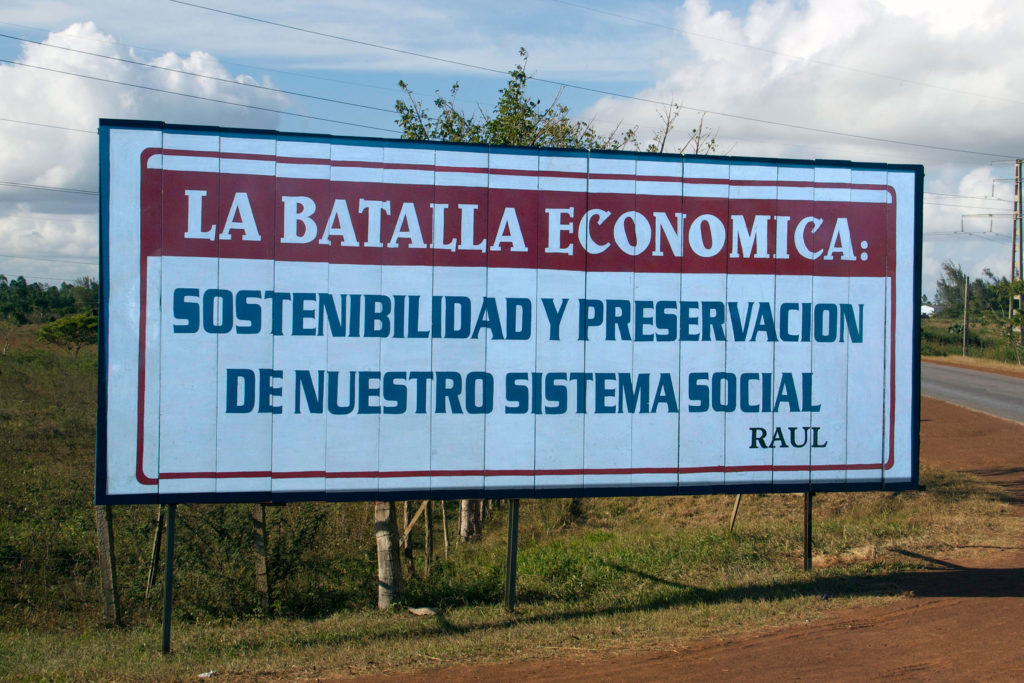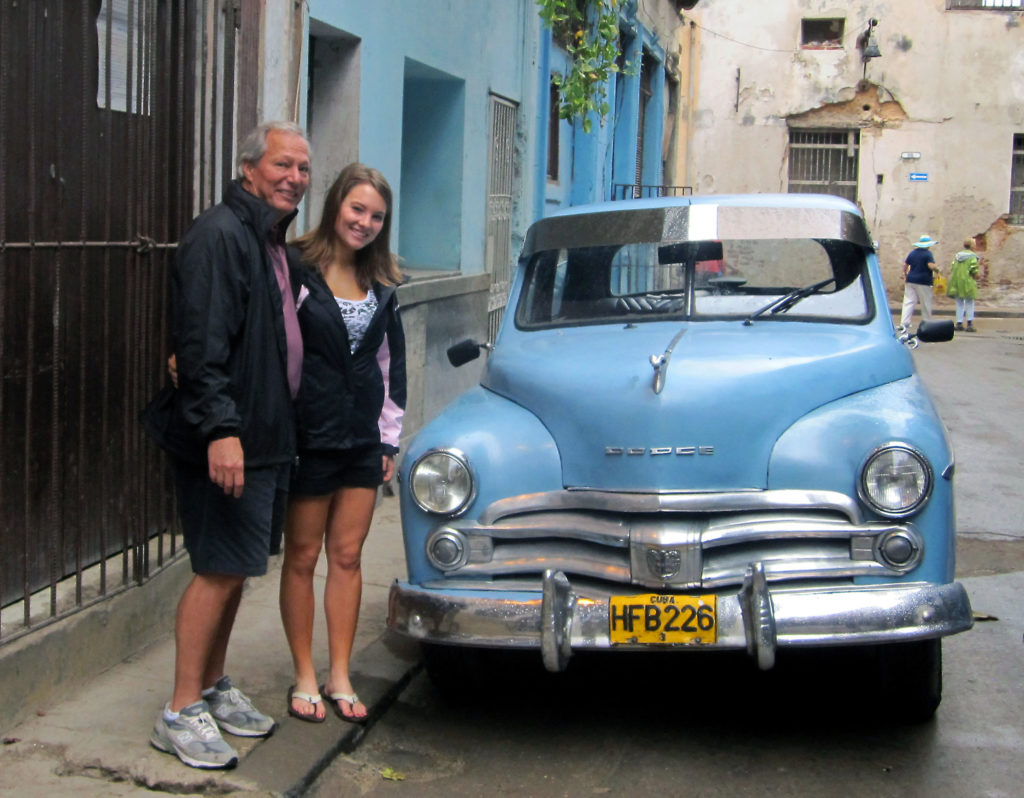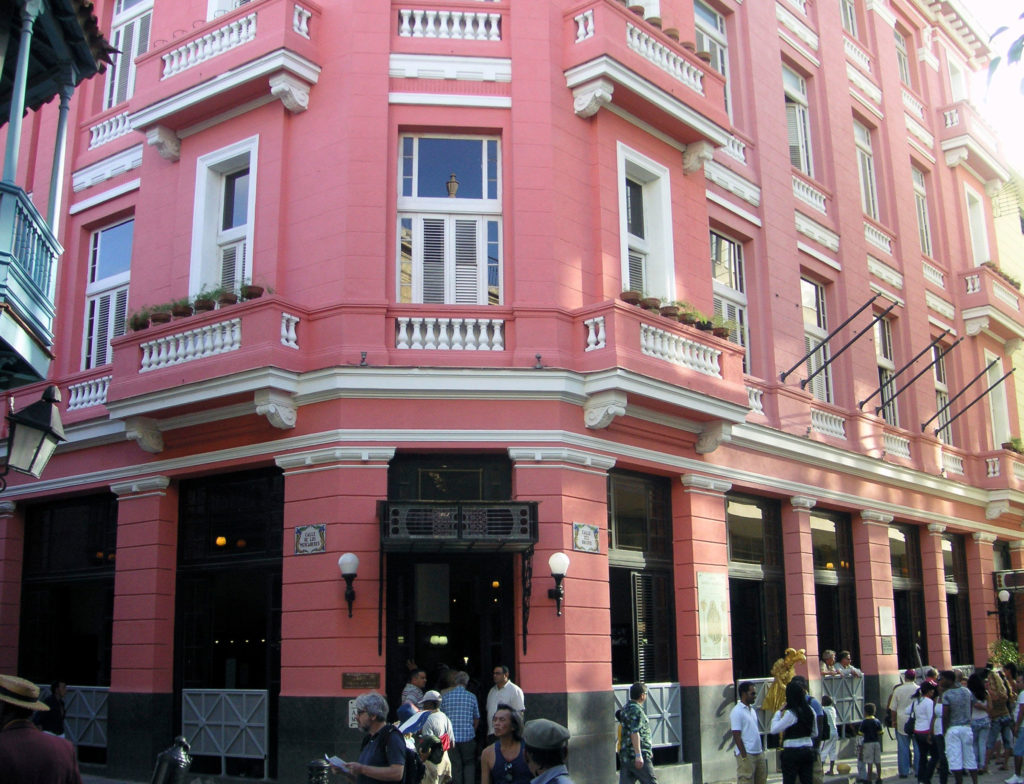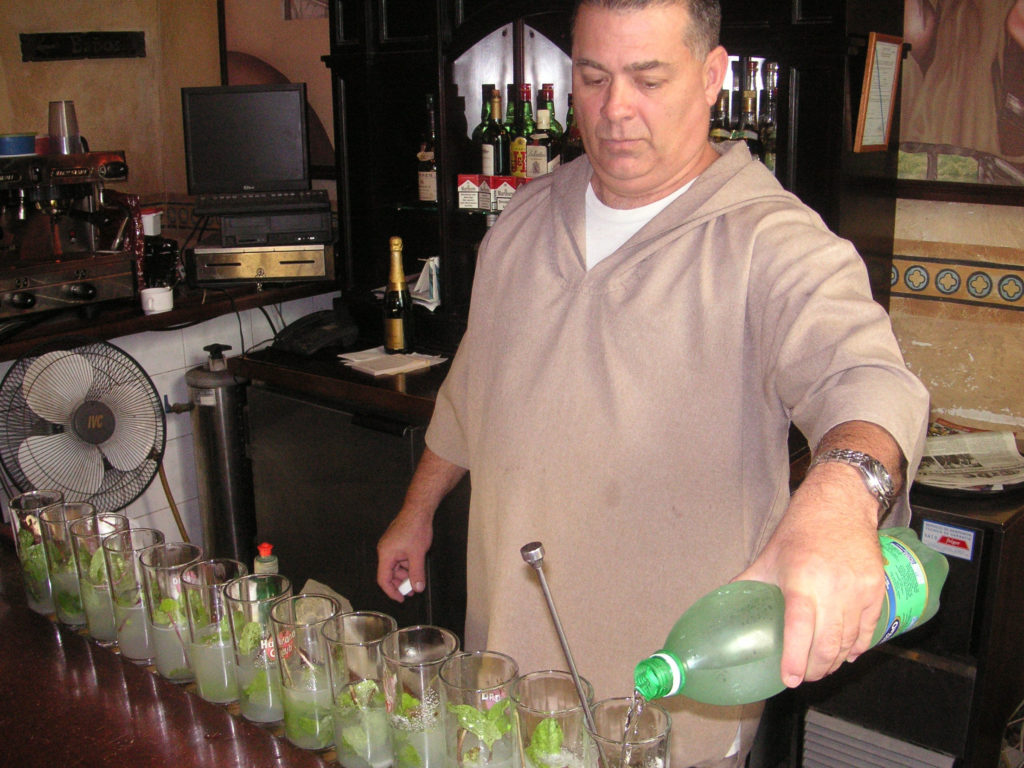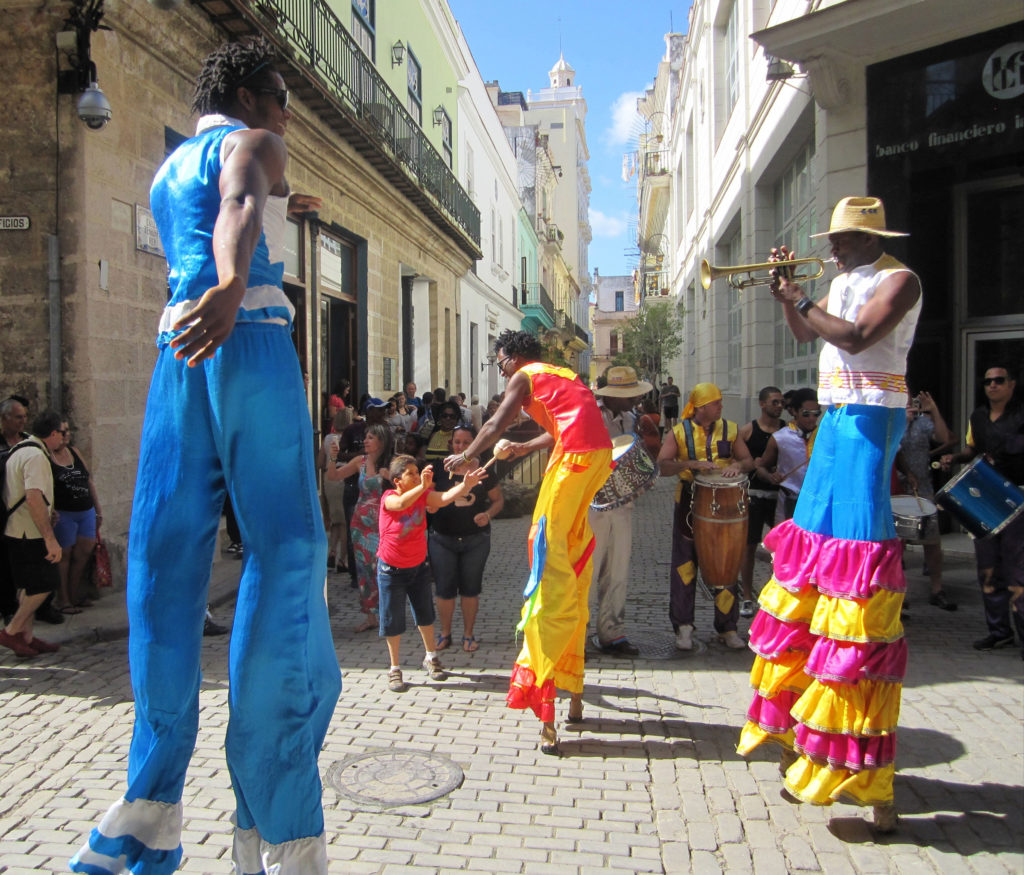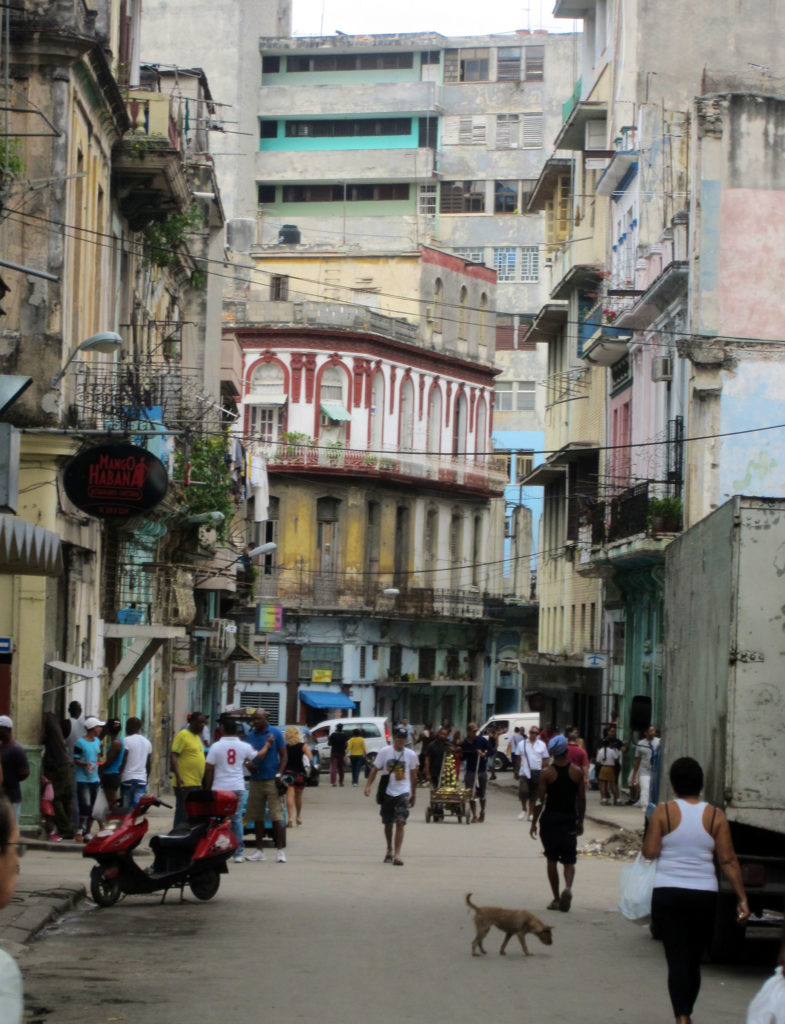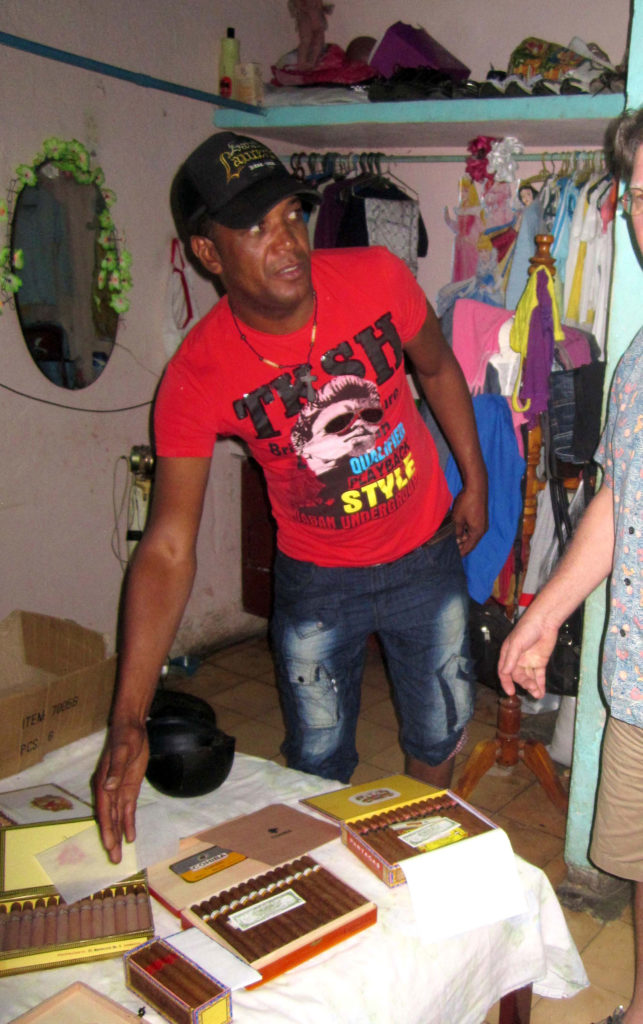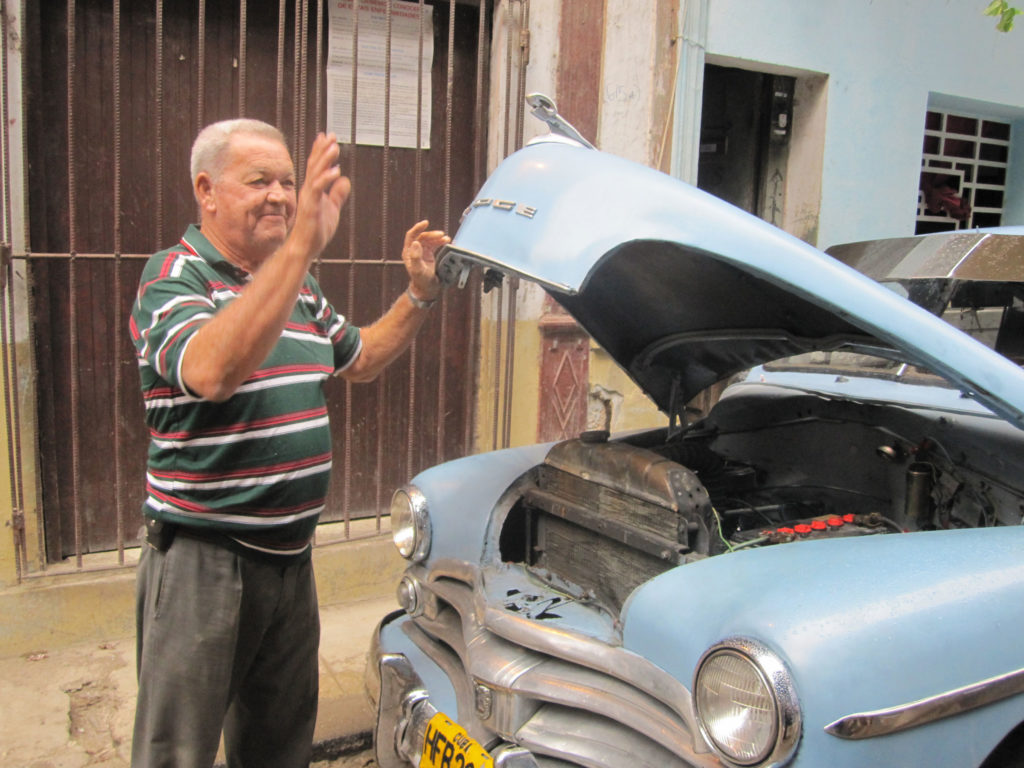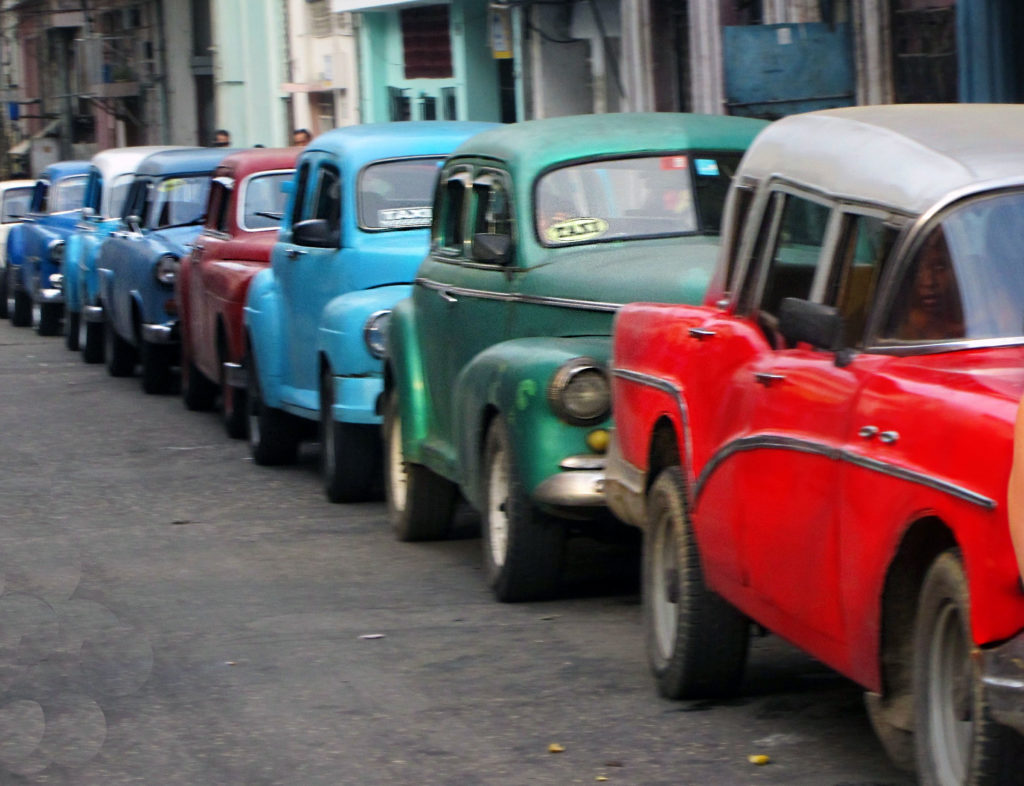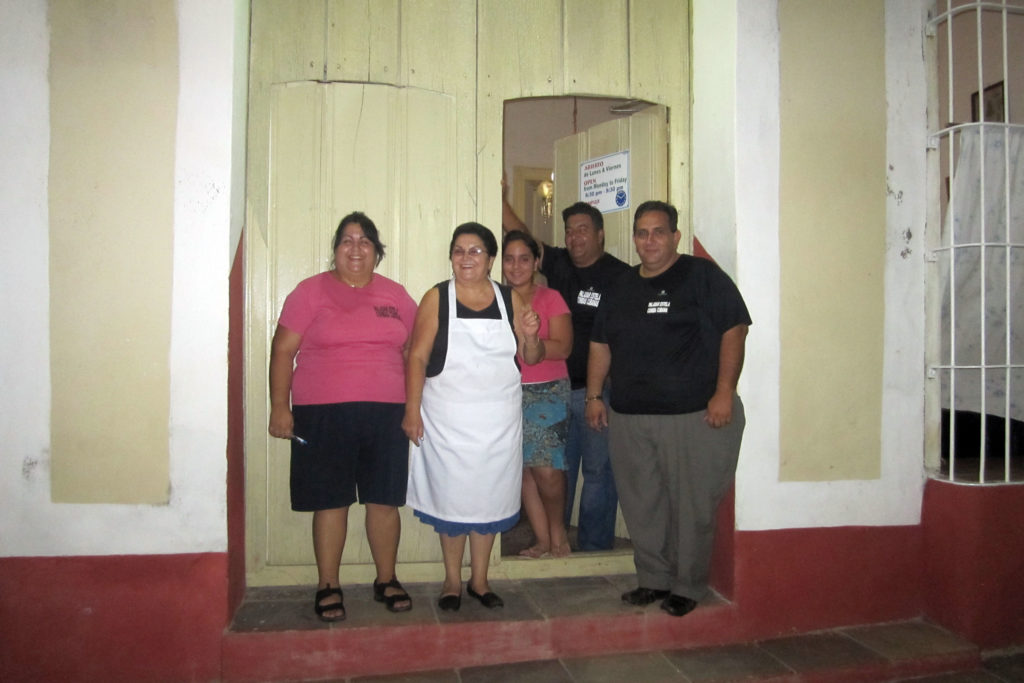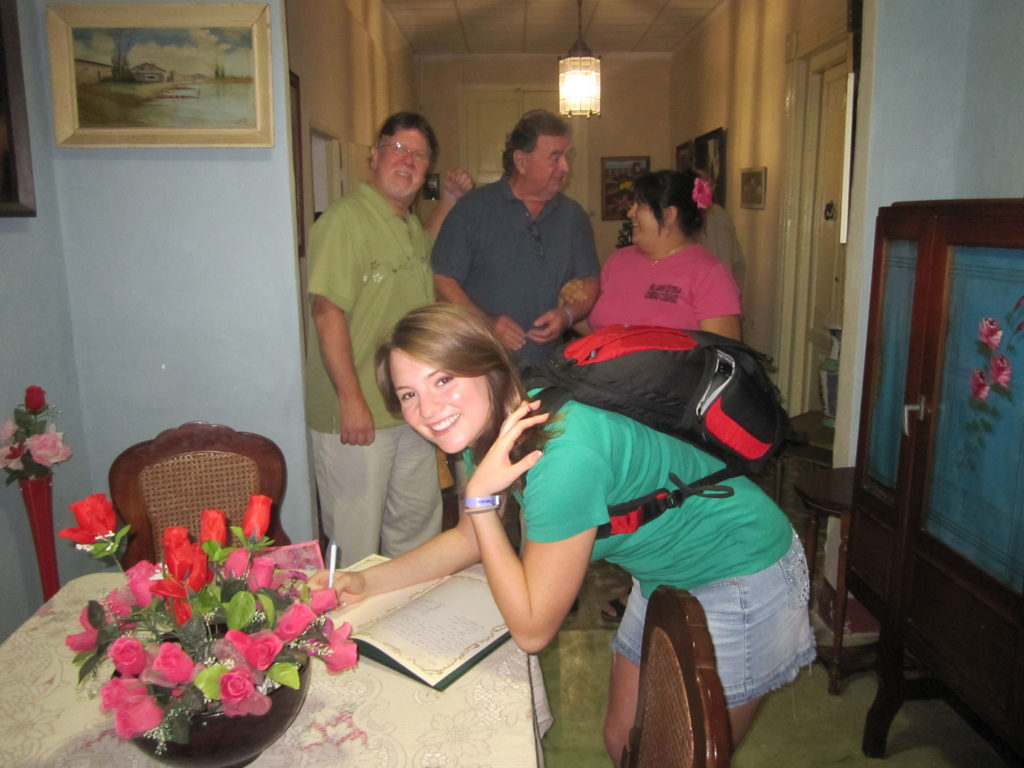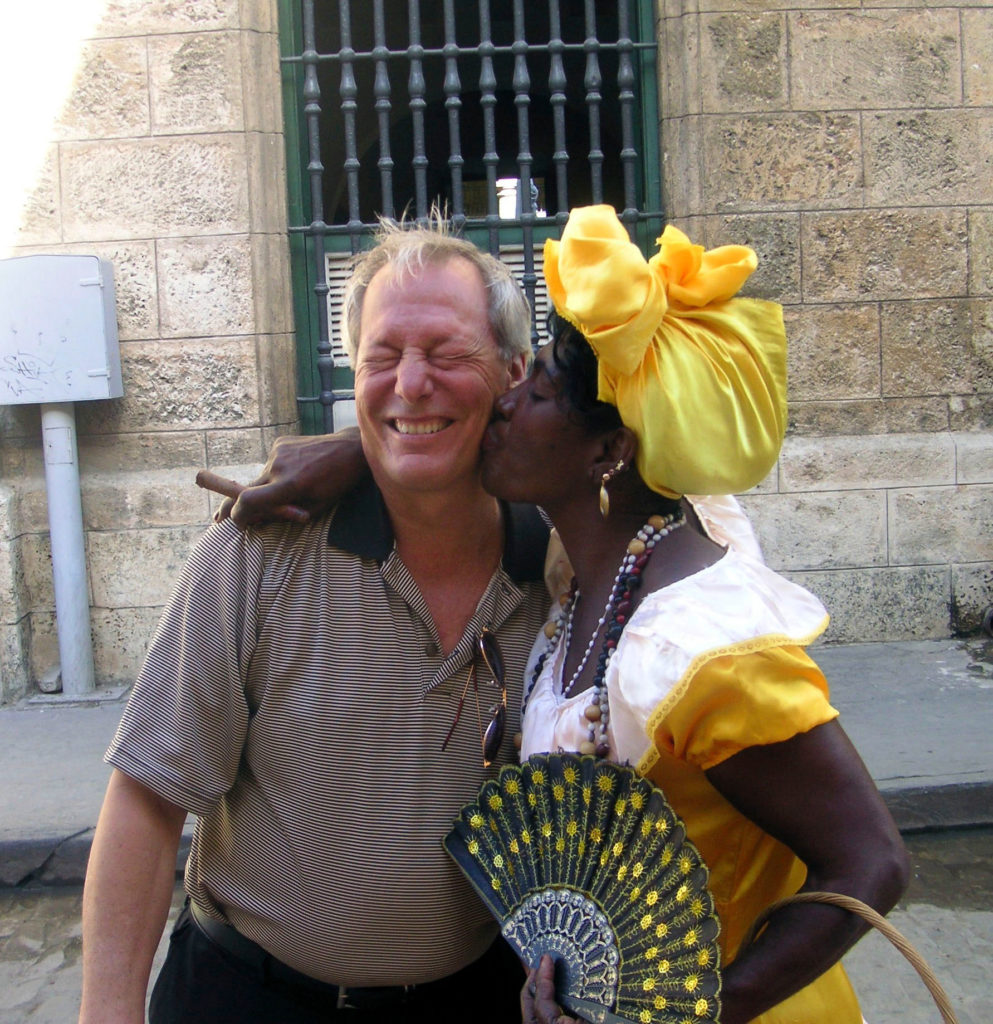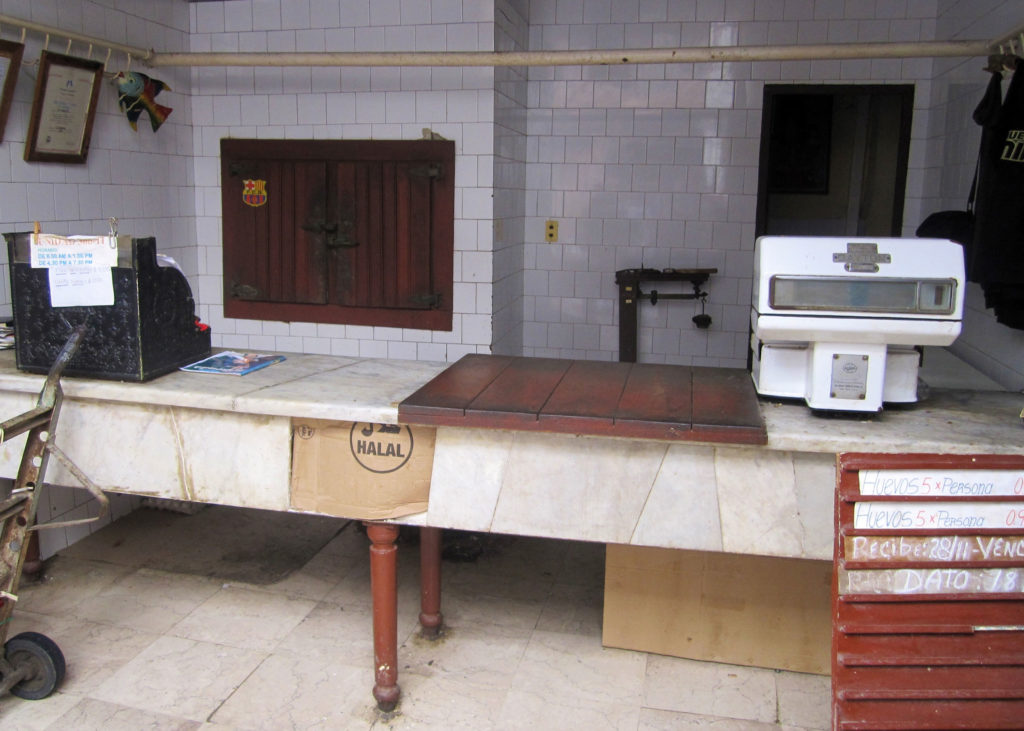Havana, once the high-rolling Las Vegas of the Caribbean, was frozen in time by the 1959 Cuban Revolution, led by the western hemisphere’s most despised and admired communist, Fidel Castro. Today, an impoverished (but educated) populace ekes out a living among the elegant ruins of opulent casinos, hotels, nightclubs, and brothels. Havana is a living museum of history, economic theory, politics, social systems, and culture—perhaps the best experiential education in the Americas.
In the fall of 2011, I mentioned to my 19-year-old niece, Briana, that I’d found a legal way around the US prohibitions on travel to Cuba and intended to go in February. By then she was exhibiting all the symptoms of insatiable wanderlust that endears her to me, and over the next few days she expressed her envy several times. Since her college schedule conflicted with the February trip, I made the not-so-great sacrifice of arranging a December trip too.
Virtually all of Havana’s hotels were confiscated by the government after Castro’s revolution. Their architecture, history, and atmosphere are fabulous, but the buildings and facilities are dilapidated, and service is typically cantankerous or non-existent.
The notable exception is the Hotel National de Cuba, maintained and run to house and impress foreign visitors and dignitaries. It features a spacious lobby and grounds, extensive artwork throughout, a large swimming pool, cabaret shows, and views of Havana Harbor and the city. But that wasn’t what we wanted; we were looking for the real Cuba.
The Hotel Ambos Mundos (Both Worlds) still has the Cuban atmosphere that captivated Hemingway for seven years and helped inspire For Whom the Bell Tolls and The Old Man and the Sea. Its dark paneled lobby is open-air by way of its large windows, its amiable lobby bar makes excellent mojitos en masse, it serves a homestyle Cuban breakfast on the roof, and, most importantly, its location is in the center of Old Havana activity.
Our rooms were on the 5th floor but the old cage elevator hadn’t stopped there in years, so we got off at the 6th and walked down. The beds were lumpy and well worn, and the AC worked sporadically, but the ambiance, view of the bay, and the surrounding street scenes more than made up.
Just outside the front door was the cobblestoned Calle Obispo, a pedestrian street running almost a kilometer from the lively Plaza de Armas to the Museum of Fine Arts (aka The Museum of Stolen Art).
The street was full of energy with performers, painters, and hawkers of jewelry, books, antiquities, and every kind of souvenir, all eager to entertain and befriend. Street musicians performed on almost every corner. Recessed courtyards, elegantly aged hotel lobbies, and shaded corner parks shared the street with banks, small shops, and make-shift museums.
Live music spilled onto the street from most restaurants and bars. The quality of the musicians and singers was extraordinary—a temptation every few hundred feet to change plans, have a seat and a drink, and join the fun.
Occasionally a line of people extended into the street where locals waited to get bread. In more than a few open-air shops, hand-written cardboard signs announced, “No meat today” or some other food in short supply.
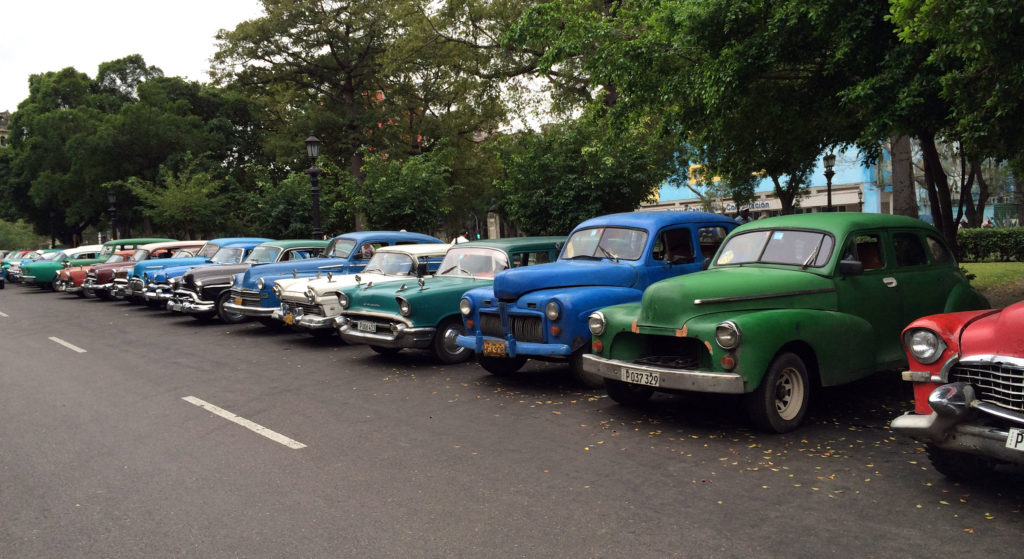
Near the Museum of Fine Arts, a line of iconic classic cars awaited. After admiring several and allowing the drivers to show off their handiwork inside and under the hood, we agreed to a two-hour city tour with a friendly fellow in a brown ’58 Olds with a million or two miles, immaculately painted, polished, and reupholstered.
Scattered throughout the city were some active restaurants and businesses, especially along the harbor and Malecon (waterfront). Most other buildings appeared derelict and, one would assume, abandoned, if it weren’t for streams of people going in and out. When the sun went down, the crowds in the dark Havana streets seemed to be emerging from Armageddon. Nevertheless, the winding cobblestone streets and old colonial architecture retain a charm that still beckons.
Several times as we walked the side streets of Havana, cigar vendors quietly approached us. We had little interest in cigars, but their method intrigued us—Cuban street vendors are typically anything but quiet. Eventually we asked a persistent but friendly hawker why what he had was better than in the stores. The answer: “Same thing, much cheaper.”
He invited us to a small door close by in an alleyway. Inside another man hurriedly unpacked boxes of cigars from a duffle bag and laid them on the bed. The packaging looked authentic, and we were told the pricing was half the prices in the official cigar stores. We again asked why. He said cigar factory workers are allowed to take one or two cigars a day to make up for the low wages. Believable, except these were full boxes—difficult for a factory manager to overlook.
I bought a box, mostly to continue the conversation; surely, I could find someone at home who’d appreciate real Cuban cigars. As they wrapped the box in a brown paper bag and taped it thoroughly, I asked if what they were doing was dangerous. “We could go to prison,” one said. As I handed them the money, I asked if they got to keep all of it themselves. “No, we have to split it with several more.” We assumed that would be the factory manager, and possibly a government official or two.
A few years earlier, Fidel had railed against theft and corruption as the biggest threat to Cuban socialism. In addition to entire shipping containers of products being stolen from the port, he claimed almost half the country’s gasoline was being stolen from the state-owned gas stations. Consequently, he replaced the gas station employees with 28,000 “social workers,” and threatened to do the same in pharmacies, hotels, and “hard currency stores” (stores where scarce luxury goods can be purchased only with US dollars). But locals told us they weren’t worried; if he really stopped theft and shut down the black market, he risked another revolution. The people had to eat.
Briana and I were looking forward to some authentic Cuban food, but in almost a week we hadn’t found a single good example. When we mentioned that to one of the taxi drivers we befriended, he smiled and said, “Government employees can recommend only government-owned restaurants.” He wrote “Paladar Estela” on a scrap of paper and gave it to us. Back at the hotel, we outlasted the Cuban phone system and made reservations.
That evening we caught the nearest taxi, an old Dodge, not painted and polished like most. The driver introduced himself as Ernesto, read the address we handed him, and we were underway. He fought 12” of play in the steering wheel to keep our path roughly aligned with the dark streets.
Ernesto spoke little English, so Briana and I got to use the Spanish we’d been working on. He told us he was an accountant by day, but recent changes in the law had made “taxista” a legitimate private profession, so he had purchased this old car for night work to support his family. Another local later told us 80% of the Cuban people work for the government and earn $17-29/month; he added, “They pretend to pay us and we pretend to work.”
We left the main street and wove through a neighborhood, searching for houses with numbers, eventually stopping at a neat but nondescript colonial house. Ernesto answered our puzzled looks by pointing to a small handprinted sign on the door. “Paladar Estela”.
Our fare was CUC $3 ($3 US). We rounded up to CUC $5 and Ernesto patted his heart and bowed his head. He asked how long we’d be, but we didn’t know; undeterred, he said he’d be there.
“Paladares” are small privately-owned restaurants run by families in their homes. The legal requirements vacillated between maximums of 12 to 20 chairs and minimums of 50 to 80% family members as employees, while the government debated whether they were the salvation of the economy or the scourge of wealth inequality. At times they were completely illegal, continuing only by “arrangement” with individual inspectors. Thus, no advertising nor acknowledgment by public sector employees. They were the secret that everyone knew but couldn’t tell us.
We were greeted at the door by an outgoing, round lady in her 30s who invited us in and began the introductions. Estela was the family matriarch and cook; her husband and son-in-law were her assistants and the bartenders; her two daughters were the hostesses/waitresses.
We were led through the living room, elaborately decorated with art and antiques, to a tree-shaded garden patio where five tables were spread among dense flora.
Paladares rarely have printed menus because ingredients are often unavailable and cooks have to improvise. Our hostess recited the night’s options: lamb, roasted pork, and grilled fish, all with generous sides of moros y christianos (black beans and rice), avocado salad, fruits, and desert. Portions were huge and delicious, but our hostess’s stories of local lore and family history were the highlight.
Our tab? About $12 each, …including drinks. While we were settling the bill and signing the guest book, Estela’s father introduced himself. He gave us a tour of the house and showed us the artwork the family had collected over many years and somehow managed to keep through the revolution.
The night had lasted much longer than we planned but Ernesto was cheerfully waiting. In Cuba, a good fare is apparently hard to find.
Reflections on Cuba and the Whiplash of Inequality
It was painfully evident that wealth inequality had set off a devastating whiplash in Cuba. When the historically poor island suddenly became the Caribbean playground of the American rich and famous, the flaunted wealth was a bitter contrast to those still stuck in the old economy of the island.
By 1959 Cuba ranked fifth in the western hemisphere in per capita income, but the gap between rich and poor was wide, especially in rural areas. The economy was growing quickly but not fast enough to absorb all 7 million Cubans and drive up wages.
Democracies resolve wealth imbalances by taxing away differences; monarchies and dictatorships require revolutions—as in the French, Russian…and Cuban.
It’s not difficult to believe that Fidel and his comrades had the welfare of the Cuban people at heart. They fought long and hard, risking their lives for their egalitarian ideas. Their focus on free education and universal healthcare addressed perhaps the greatest shortcomings of capitalism.
Fidel’s identity as an advocate for and protector of the common people, combined with substantial natural charisma, explains why many Cubans loved him in spite of the tragic hardships he brought them. Perhaps it also explains how he survived more than 50 years in power, despite the determined efforts of Cuban expats whose property he seized and the powerful governments he continuously aggravated. Rebellion is difficult to foment against a leader who has the heart of many of the people.
Nevertheless, his benevolent intentions didn’t justify the brutal political repression, nor the forced detention of a large population who felt compelled to seek better economic opportunity elsewhere. Leaders of violent revolutions rarely abandon the means that brought them to power.
Perhaps we can understand the impatience of a 33-year-old war victor, fresh from a year in prison, a year and a half exile in Mexico, and two years of brutal guerrilla warfare. But expropriating assets and foreign-owned businesses proved an imprudent solution, as it effectively cut-off desperately needed future investment. Nor did the Cuban government fare any better than other governments in operating businesses; oil refineries, sugar mills, and factories languished into obsolescence.
A more feasible and palatable plan would have been to impose stringent employment legislation, minimum wages, and high taxes on the businesses—a form of socialism that is an accepted right of governments in even the most capitalist of countries. (Few socialist or capitalist countries are as socialist or capitalist as they like to believe.)
The new regime also failed to realize that the island depended too much on trade with its wealthy neighbor 90 miles to the north to continuously “give it the stiff middle finger,” as Anthony Bourdain described it.
The sum of these miscalculations wreaked havoc and hardship on the Cuban people. Even Fidel eventually admitted the Cuban model “doesn’t work, even for Cuba.”
Some say the US embargo (“the blockade” in Cuban speak) is to blame, and undoubtedly it has exacerbated Cuba’s challenges. However, most economists attribute Cuba’s economic problems directly to its socialist extremes.
The current government is reluctantly retreating to a balance with capitalism and that has allowed the people some relief from the suffocating poverty.
Someday Cuba will emerge from its generations of lost productivity and depressed lifestyle, but the world will see it all again in other places. Extreme wealth inequalities and the resulting convulsions of social systems are a recurring theme in human history.
